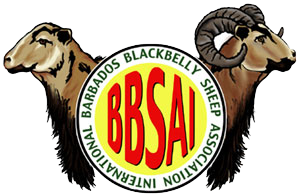Calculating the coefficient of inbreeding (COI) can help you determine the relatedness between two sheep to either prevent too much inbreeding or to help make strategic decisions when linebreeding. Click the link below to calculate coefficient of inbreeding for a single sheep or for the offspring of a mated pair.
https://www.blackbellysheep.org/db/members/analyze.php
(You will enter the Members-Only area and will be prompted to log in.)
We suggest you work through a few quick examples to get a better understanding of how to use the calculator. Click the link below to view them.
https://www.blackbellysheep.org/about-the-sheep/coefficient-of-inbreeding/coi-examples/
Before we discuss COI, let’s review how genes work. A gene is a strand of DNA that exists in every cell of a living organism. When two sheep breed, each sheep contributes equally to the genetic makeup of its offspring. For example, a ewe will contribute a gene for a dark brown coat and a ram will contribute a gene for a light hair coat and the interaction of those two genes will determine the hair coat of their lamb. If the ewe and ram share a common ancestor (for example the same grandfather), there is a chance (a mathematical probability) that the ewe and ram will each be passing to their offspring the identical hair color gene that they got from their common grandfather.
Inbreeding coefficient, COI, is a percentage of probability that the ram and ewe share a common ancestor that contributed a common gene. 0% COI indicates that there is zero probability that the sheep have a common ancestor; 80% indicates that the two sheep are very closely related and that genes from a common ancestor will be paired in the offspring.

Why should you care about COI? Because generally, the more an animal is inbred, the more likely it is that negative genetic characteristics will be expressed. This is known as inbreeding depression. In contrast, the less inbred an animal is, the more likely it is that superior genetics will be expressed. This is known as hybrid vigor. Inbreeding depression can cause poor performance in your flock, such as infrequent twinning or smaller sheep. Hybrid vigor can result in more robust, healthier sheep.
Usually, breeders want to select sheep for breeding that have a low COI to prevent harmful genes from being expressed. But sometimes, especially in the case of rare breed conservation, breeders may purposely breed related animals, called linebreeding, to increase the genetic contribution of the shared bloodline. Another reason for inbreeding is to increase the “sameness” or homogeneity of lambs, for example to reduce unwanted color variation.
You can use the new Pedigree Analysis function to predict the COI of lambs that would be produced if you mated two specific sheep. If you want to look deeper, you might examine the various reports for each of your breeding animals to find out which (if any) sheep are most common in their pedigrees. You might want to avoid using descendants of those common animals where feasible in order to broaden the genetics of your flock.
To learn more about coefficient of inbreeding, see https://scratchcradle.wordpress.com/2012/09/16/gms12-inbreeding-coefficients/ Although written about chickens, this is an excellent article to understand why COI is important, and it provides good examples.
